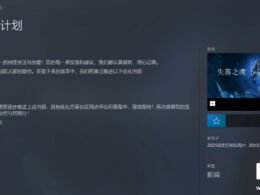Tesla’s FSD Technology Faces Consumer Skepticism: Key Survey Insights
A recent survey involving over 8,000 American consumers sheds light on the public’s perception of Tesla’s Full Self-Driving (FSD) technology. Contrary to expectations, the data reveals that FSD is not contributing positively to Tesla’s market appeal. In fact, 35% of respondents reported feeling less inclined to purchase a Tesla due to this feature, while nearly half voiced a belief that FSD technology should be deemed illegal.
Survey Highlights: Consumer Attitudes Toward FSD
According to findings published in the "Electric Vehicle Intelligence Report" by Slingshot Strategies, only 14% of participants expressed optimism about Tesla’s FSD as a decisive factor in their purchase decisions. In stark contrast, 35% indicated that they would be dissuaded from buying a Tesla because of the FSD technology, while 51% stated that FSD had no effect on their inclination to buy.
Legal Perspectives on FSD
Legal concerns also loom large in consumer attitudes. Approximately 48% of those surveyed believe that FSD technology should be banned altogether. Only 35% supported its legality, and the remainder remained neutral on the issue. These opinions align with broader sentiments regarding liability. Two-thirds of respondents think that, in the event of an accident involving autonomous driving or driving assistance systems, the automotive company should be held responsible. Additionally, 44% asserted that FSD should bear full responsibility when accidents occur.
Misleading Autopilot Branding
While Tesla’s FSD is marketed as a premium upgrade, the standard “Autopilot” system offers mere adaptive cruise control and basic steering assistance, requiring drivers to maintain their grip on the steering wheel at all times. A significant 49% of surveyed consumers felt that the term "Autopilot" was misleading and did not accurately represent the capabilities of the system.
Hardware Debate: Cameras vs. LiDAR
Tesla’s shift from using radar and ultrasonic sensors to a camera-only system has not garnered approval. Only 3% of respondents supported this approach, while a commanding 70% insisted that autonomous vehicles should incorporate both LiDAR and camera systems. Furthermore, 71% of those surveyed advocated for governmental regulations to enforce the inclusion of these technologies, highlighting a demand for enhanced safety.
Ongoing Legal Challenges
Tesla is currently embroiled in a personal injury lawsuit stemming from a fatal accident involving its Autopilot feature back in 2019. Lawyers for the plaintiff have accused Elon Musk and Tesla of overstating the system’s safety capabilities, leading users to develop an overreliance on the technology. The lawsuit seeks compensation of approximately $345 million.
Consumer Confidence and the Future of Autonomous Driving
The skepticism toward Tesla’s FSD technology underscores a broader ambivalence toward autonomous driving solutions among American consumers. With significant proportions of the population expressing concerns about safety, misbranding, and inadequate hardware, Tesla faces challenges that may hinder its efforts to establish leadership in the electric vehicle market.
As the automotive landscape continues to evolve, addressing these consumer concerns will be crucial for Tesla and other manufacturers aiming for successful integration of advanced driving technologies. The demand for clarity, strict regulations, and genuine safety assurances could play a pivotal role in shaping consumer attitudes and driving future adoption of self-driving features.
Conclusion
The survey results provide invaluable insight into the complex relationship between consumer expectations and the technological promises of autonomous driving systems like Tesla’s FSD. With a substantial number of American consumers expressing reservations about the legality, effectiveness, and safety of these technologies, the path forward for Tesla will require significant adjustments to both technology and marketing strategies to regain consumer trust and confidence.






